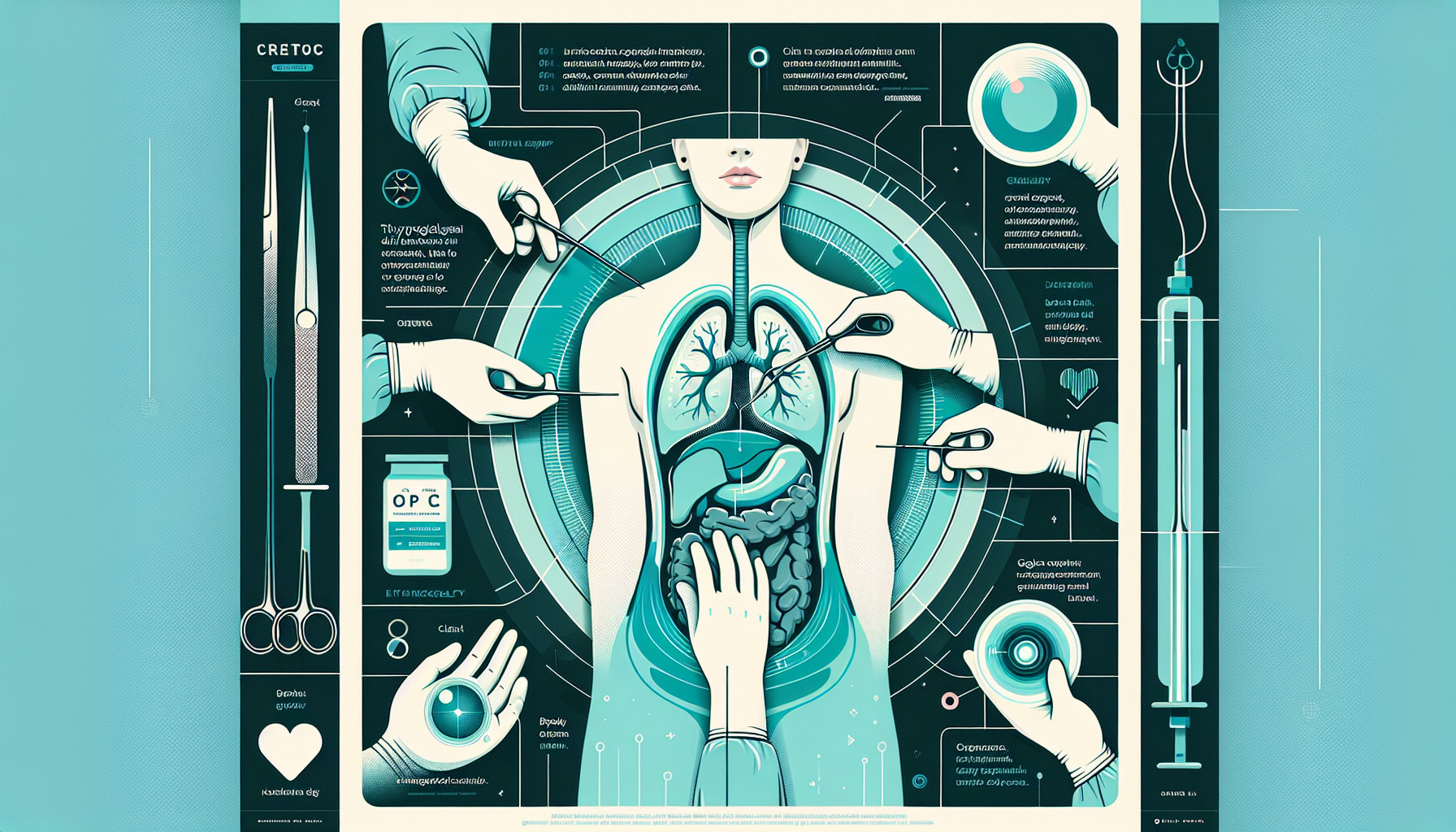Our Summary
This research paper discusses a new way to perform certain types of thyroid surgeries. The method involves using a small camera (endoscope) and a special tool (endoscopic burr) to operate through the mouth (transoral). This approach leaves no visible scars, which is a significant benefit.
The study used 13 cadavers to test the procedure. The researchers found that they could successfully perform two types of operations using this method. One type, called chondrolaryngoplasty, is a surgery that reduces the prominence of the ‘Adam’s apple’ and is often done as a part of gender transition for transgender patients. The second type, the Sistrunk operation, removes a certain type of cyst and part of the hyoid bone in the neck.
The researchers concluded that their new technique is not only feasible but also potentially safer and more effective, particularly for transgender patients and those with specific types of cysts. They also noted that using this special tool to thin a certain part of the cartilage and cut a portion of a bone in the neck could make these surgeries safer and more manageable.
FAQs
- What is the new method of performing thyroid surgeries discussed in the research paper?
- What types of surgeries were successfully performed using this new method on cadavers in the study?
- How might this new surgical technique be beneficial for transgender patients and those with specific types of cysts?
Doctor’s Tip
A helpful tip a doctor might tell a patient about thyroglossal duct cyst removal using this new transoral endoscopic approach is to discuss the benefits of the procedure, including the lack of visible scars and potentially improved safety and effectiveness compared to traditional methods. Patients should also be informed about the specific types of cysts that may be suitable for this approach and the potential advantages for transgender patients undergoing chondrolaryngoplasty. Additionally, patients should be advised to follow post-operative care instructions carefully to ensure proper healing and recovery.
Suitable For
Patients who are typically recommended thyroglossal duct cyst removal include:
- Patients with recurrent infections or abscesses in the cyst
- Patients with a large or symptomatic cyst that is causing difficulty swallowing or breathing
- Patients with a cyst that is suspected to be cancerous
- Patients with a cyst that is growing rapidly or causing cosmetic concerns
- Pediatric patients with a cyst that is causing feeding difficulties or respiratory problems
Overall, patients who are experiencing symptoms or complications related to a thyroglossal duct cyst are typically recommended for removal surgery to prevent further issues and improve quality of life.
Timeline
Timeline of patient experience before and after thyroglossal duct cyst removal:
Before surgery:
- Patient presents with a neck lump or swelling that is suspected to be a thyroglossal duct cyst.
- Patient undergoes diagnostic tests such as ultrasound or CT scan to confirm the presence of the cyst.
- If the cyst is symptomatic or causing issues such as difficulty swallowing or breathing, surgery may be recommended.
- Patient meets with a surgeon to discuss the procedure, risks, and benefits.
During surgery:
- Patient is put under general anesthesia.
- Surgeon makes an incision in the neck to access the cyst and remove it along with any surrounding tissue or structures.
- The Sistrunk operation may also involve removing part of the hyoid bone to prevent recurrence of the cyst.
- Surgery typically takes 1-2 hours.
After surgery:
- Patient wakes up in the recovery room with a bandage over the incision site.
- Patient may experience pain, swelling, and discomfort in the neck area.
- Patient is monitored for any complications such as bleeding or infection.
- Patient is usually discharged the same day or after an overnight stay in the hospital.
- Patient is given post-operative instructions for wound care, pain management, and when to follow up with the surgeon.
- Patient may need to avoid certain activities or foods for a period of time to aid in the healing process.
- Follow-up appointments are scheduled to monitor the healing process and ensure there are no complications.
- Patient may experience improvement in symptoms such as difficulty swallowing or breathing after the cyst is removed.
What to Ask Your Doctor
- What is a thyroglossal duct cyst and why is it necessary to remove it?
- What are the risks and benefits of the transoral endoscopic approach compared to traditional surgery for thyroglossal duct cyst removal?
- What is the success rate of the transoral endoscopic approach for thyroglossal duct cyst removal?
- How long is the recovery time after undergoing thyroglossal duct cyst removal using the transoral endoscopic approach?
- Will there be any restrictions or limitations on activities following the procedure?
- Are there any potential complications or side effects associated with the transoral endoscopic approach for thyroglossal duct cyst removal?
- Will there be any visible scarring after the surgery?
- How many procedures of this type have you performed using the transoral endoscopic approach?
- Are there any specific factors that would make me a better candidate for the transoral endoscopic approach for thyroglossal duct cyst removal?
- What follow-up care or appointments will be necessary after the surgery?
Reference
Authors: Li HN, Chan PWH, Tong MCF. Journal: World J Surg. 2023 Oct;47(10):2474-2478. doi: 10.1007/s00268-023-07091-5. Epub 2023 Jul 24. PMID: 37488333
